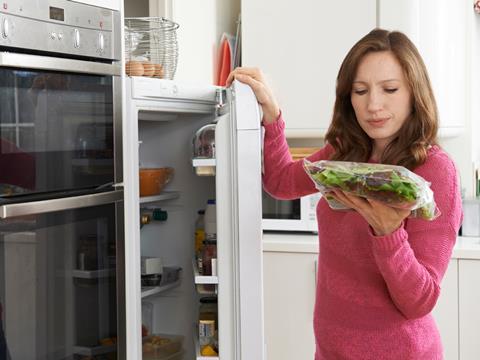
Could new, novel technologies be key to the role of packaging in the reduction of food waste? Yes, says Andrew Manly, communications director at AIPIA – and smart packaging should lead the way.
There are many reasons why people are questioning the desirability and usefulness of some kinds of packaging. This skepticism is often based on mythology around what the packaging actually does or does not do.
My favourite is the political outrage around packaging cucumbers in a shrink-wrapped ‘skin’. Michael Gove, when he was UK Environment Minister, told us that this was ridiculous. Well, Michael – you were wrong! All the science shows that a cucumber wrapped in this way lasts up to five times longer than the unwrapped version.
But we live in a world where myth is often easier to believe than reality. So, packaging is now generally seen as bad – whether or not it’s doing its job properly. Oh, just in case we forget what that job is: Preserve, protect and, when necessary, promote the product.
And if some reinforcement of the 3Ps, as l call them, is necessary then EUFIC, The European Food Information Council – marking International Day of Awareness of Food Loss and Waste on 29th September – provided plenty.
One-third of all food, 1.3 billion tonnes per year, produced in the world for human consumption is lost or wasted, which represents 8-10% of global greenhouse gas emissions, and if food loss and waste were a country, it would be the third biggest source of greenhouse gas emissions. In the EU alone, 88 million tonnes of food are discarded every year, and an average EU citizen wastes around 173 kg of food annually.
So, what’s my point? Well, how do we reduce that staggering figure amount of waste without doing something a bit more realistic than just talking about it? If Smart Packaging can do anything, it can deliver messages or information to the consumer, it can track and report on the condition of goods along the supply chain; it can keep perishable foods fresher for longer; it can help to identify counterfeit and potentially dangerous goods.
These are all real benefits that act upon this waste and could have a direct impact now. It is recognised that most food waste occurs in the home of the consumer. For years we have been talking about the confusion and unnecessary waste caused by ‘Use By’ and ‘Best Before’ dates on perishable foods.
But it is only recently that many big retail chains are now starting to remove these from hundreds of items. But what is the next step? Are people meant to guess what is happening to the food? Why not offer the customer something which can help?
This assistance can be as simple as a colour-changing label attached to the pack which reacts to the product as it deteriorates, or it can be as sophisticated as an alert device that can send messages to your phone (or a refrigerator) that it is time to eat that food.
And even before it gets on the supermarket shelf it can be tracked to ensure its provenance (if you buy a Wagyu steak you surely want to know its real!) or whether it has been transported at the correct temperature before it arrives at the shop.
Packaging as a force for good is a few simple steps away, provided people embrace new technologies and stop demonising it. In fact, it’s always been a force for good, but now we might just have the means to change peoples’ opinions and reinvent its image.
This article was created in collaboration with AIPIA (the Active and Intelligent Packaging Industry Association). Packaging Europe and AIPIA are joining forces to bring news and commentary about the active and intelligent packaging landscape to a larger audience. To learn more about this partnership, click here.












No comments yet